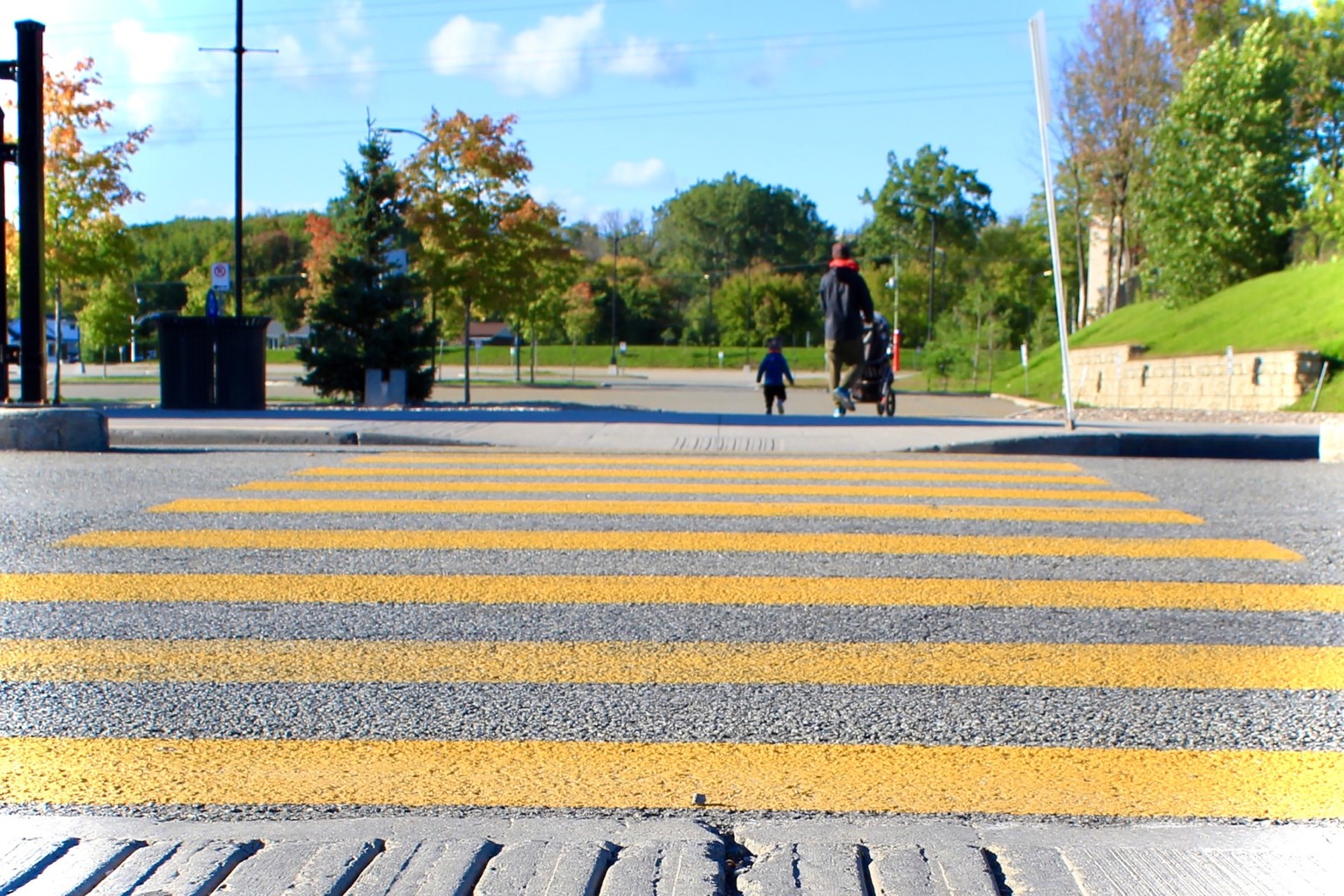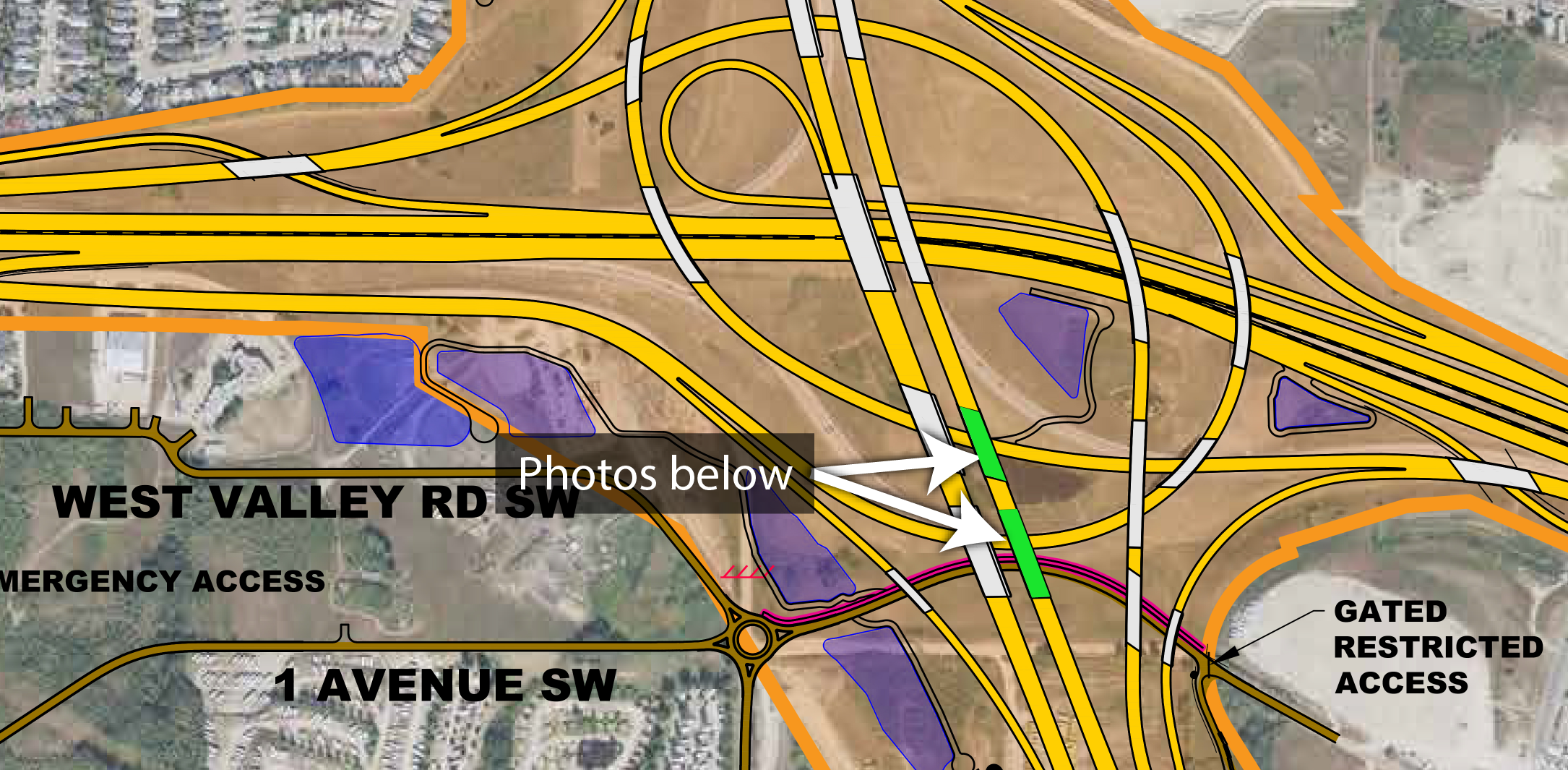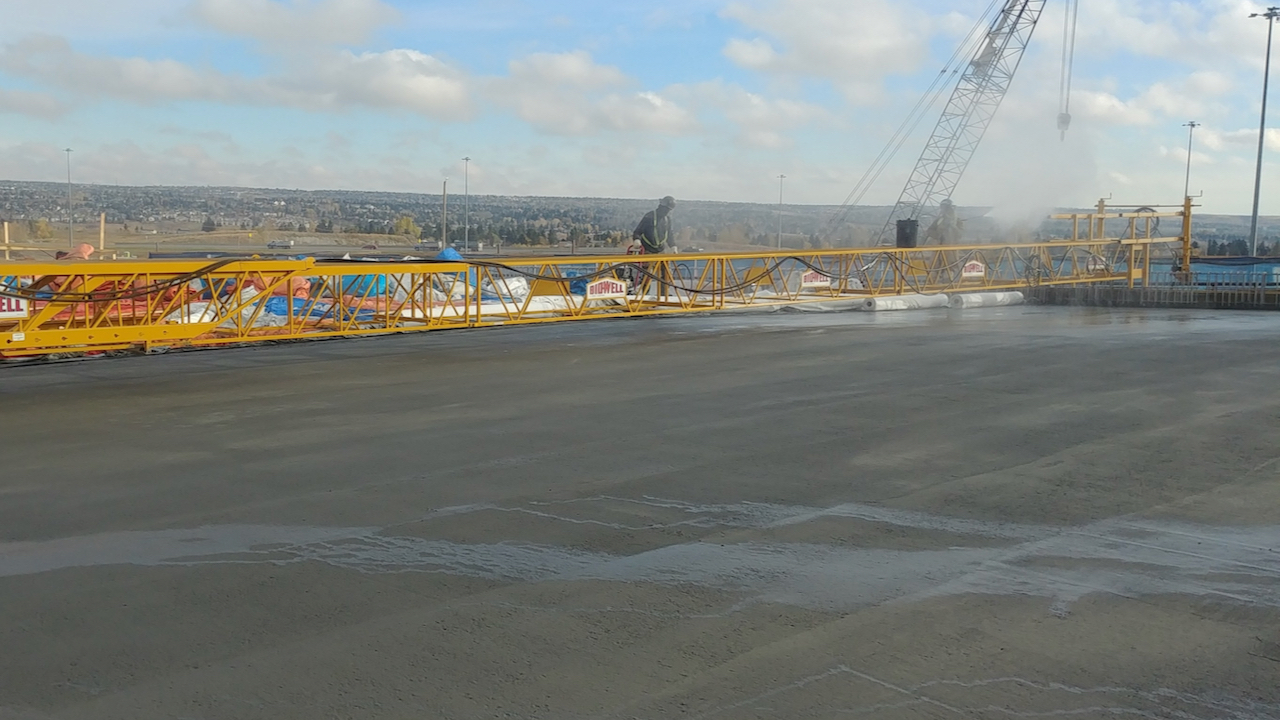Project Update – October 19, 2020
What’s Happening in Traffic This Week
Eastbound Trans-Canada Highway reduced to one lane – There will be daily inside lane closures in three separate locations to pave medians for future detours.
Southwest Calgary Ring Road now open to traffic – On October 1, 12 kilometres of the Southwest Calgary Ring Road, known as Tsuut’ina Trail, opened to traffic. This marks a major milestone in the project and reduces existing travel routes by 6.5 kilometres. This portion of Tsuut’ina Trail makes up just 40 per cent of its total length, the rest of which is scheduled for completion in 2021.
Visit Alberta.ca to read more.

Credit: Calgaryherald.com
All work is weather dependent. Please check 511 Alberta and The City of Calgary’s traffic information map for up-to-date information on traffic detours and speed reductions.
We appreciate your patience during construction.

Getting Ready for Cast-in-Place Pier Segments
The concrete for the pier table has cured and the hoarding has been removed from the first pier on the north side. For the next several weeks, crews will be assembling and installing the form travellers.
As the name implies, form travellers are pre-assembled forms that will be filled with concrete to make a bridge segment. Once the concrete has cured, the forms are moved to the end of that segment and the process begins again.

Example of a form traveller being used for cast-in-place (mid-air) bridge construction. Credit: Pullman Services
Example showing form travellers on both ends of the bridge pier on the right. Credit: Pullman Services
In-River Pier Construction

Multiple Milestones on Multiple Bridges
EllisDon has been pushing hard to take advantage of every hour of sunshine and above-freezing temperatures. Over the last few weeks, crews have raised girders, poured bridge decks and paved roads and bridges.
Water Under the Bridge
Before paving or waterproofing the bridge deck, crews installed a wick drain. Wick drains use corrugated plastic and geotextile material to allow water to drain and filter soil and debris. On bridges, wick drains are often placed in the low corner and surrounded by a waterproof membrane.
Improper water drainage on bridges can result in large puddles blocking the roadway or create slippery conditions through hydroplaning or ice formation.

Wetland Removal Underway
Last week crews began excavating the wetland in the Transportation Utility Corridor (TUC) west of Aspen Woods. The wetland stretches east-west across the future mainline as well as north-south through the future Bow Trail S.W. interchange alignment, resulting in ground conditions unsuitable for infrastructure. Once excavation is complete, the area will be filled with material more suitable for building infrastructure upon, along with a culvert to maintain existing drainage.
Keep Out of the Construction Zone
While you may have walked in these areas in the past, the trails between West Springs and Aspen Woods are within the Transportation Utility Corridor (TUC), which is private property and off limits to the public.
Construction of the South project is fully underway and there are many hazards on site (seen and unseen) including heavy equipment and recently disturbed earth. Construction sites are not safe for the public. Please respect the boundaries and keep out of the construction zone.
You can find other walking areas on The City of Calgary’s pathways and bikeways map and off-leash dog area map.
Thank you for your cooperation to keep the construction zone safe for everyone.
South Project Takes Over the Gravel Pit
For the last several years, the Southwest Calgary Ring Road project has been mining gravel from the Transportation Utility Corridor between Old Banff Coach Road and Bow Trail S.W. Now that the South project is underway this area will be managed by the contractor – Calgary Safelink Partners (CSP).
Gravel removal from the area will continue, however the procedure will be different from that of the Southwest Calgary Ring Road. For instance, gravel will not be crushed on site but instead hauled to a separate facility to reduce dust and noise for adjacent residents.
For more information about gravel removal for the South project, please visit westringroad.ca > Construction and scroll to the bottom of the page.


Pedestrian Safety Month
Vehicle collisions with pedestrians tend to increase in the fall because of fewer daylight hours and reduced visibility. Hitting a pedestrian is most likely to occur between 3 p.m. and 7 p.m. when people are rushing home from work and the sun is lower on the horizon.
In Alberta, an average of 43 pedestrians were killed and 1,166 were injured each year between 2013 and 2017. Nearly half of drivers involved in pedestrian casualty collisions failed to yield right-of-way to the pedestrian (2017).
The average weight of a car is about 4,000 lbs, and the average weight of a person is around 137 lbs. Research shows that when pedestrians or cyclists are hit by cars travelling 50 km/hour, the likelihood of the pedestrian dying is almost 60 per cent. At 60 km/hour that likelihood jumps to 85 per cent and at 80 km/hour the fatality is nearly certain.
Please be alert for pedestrians, particularly in the early evening.
























